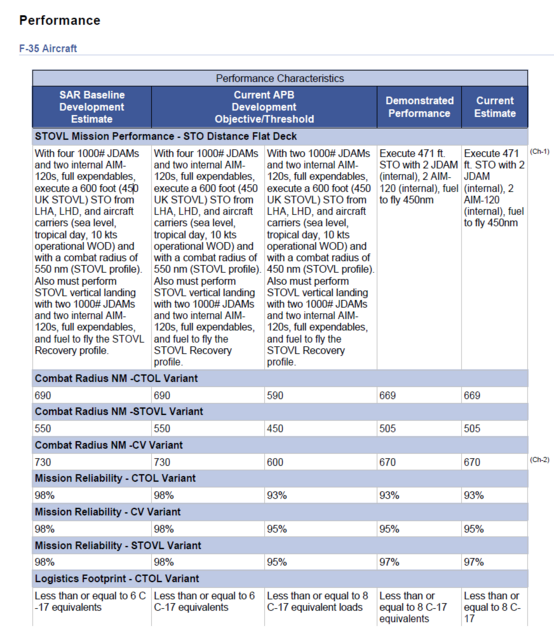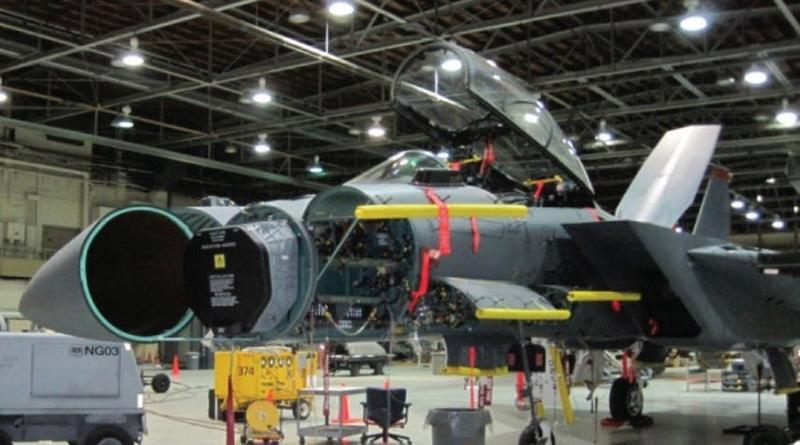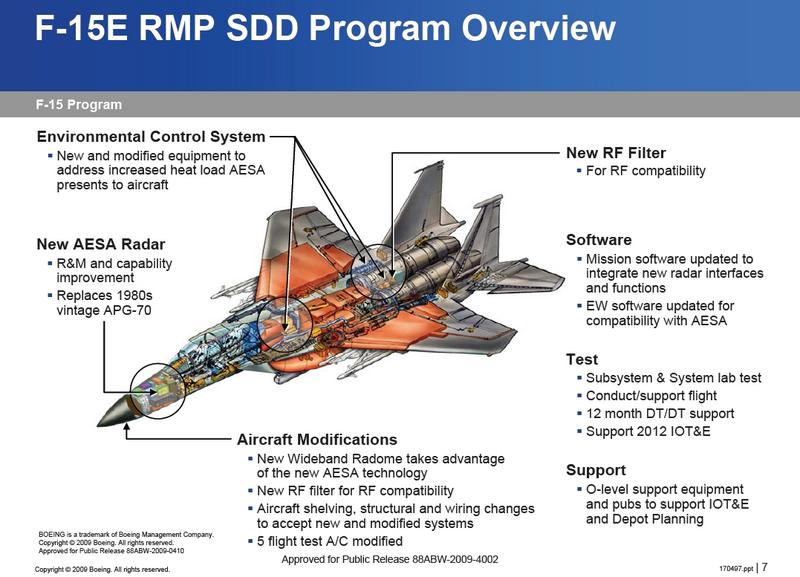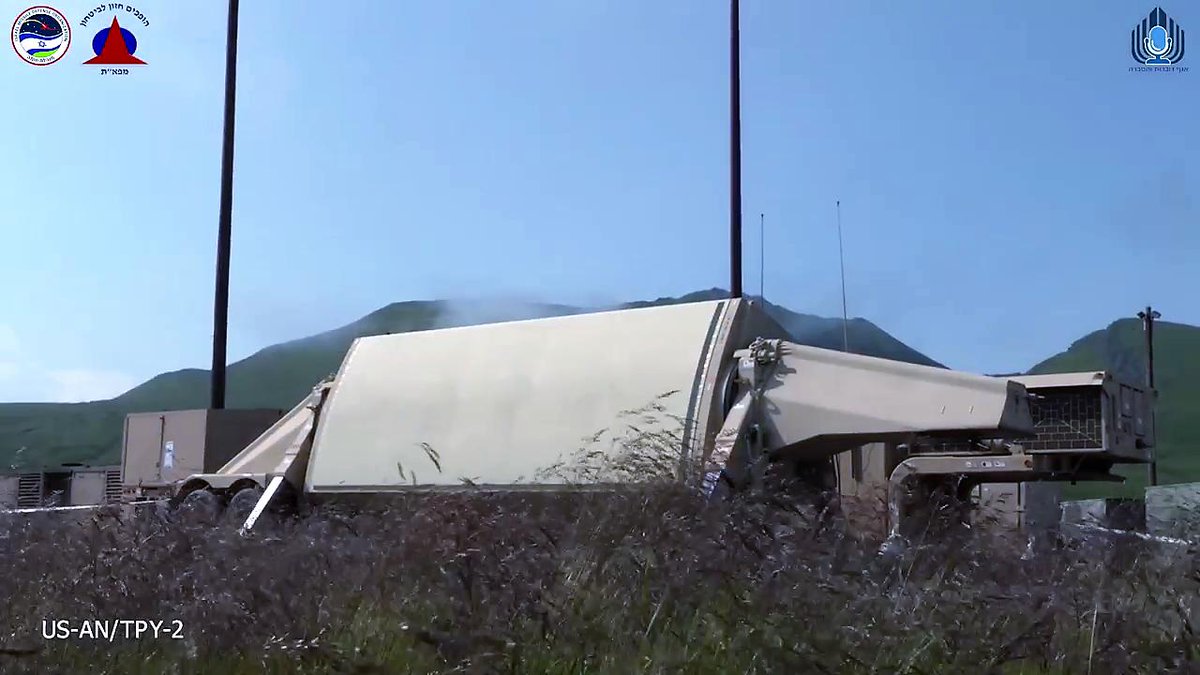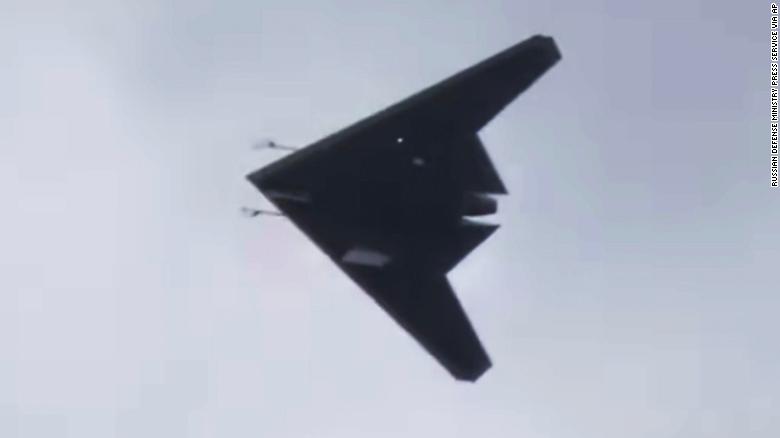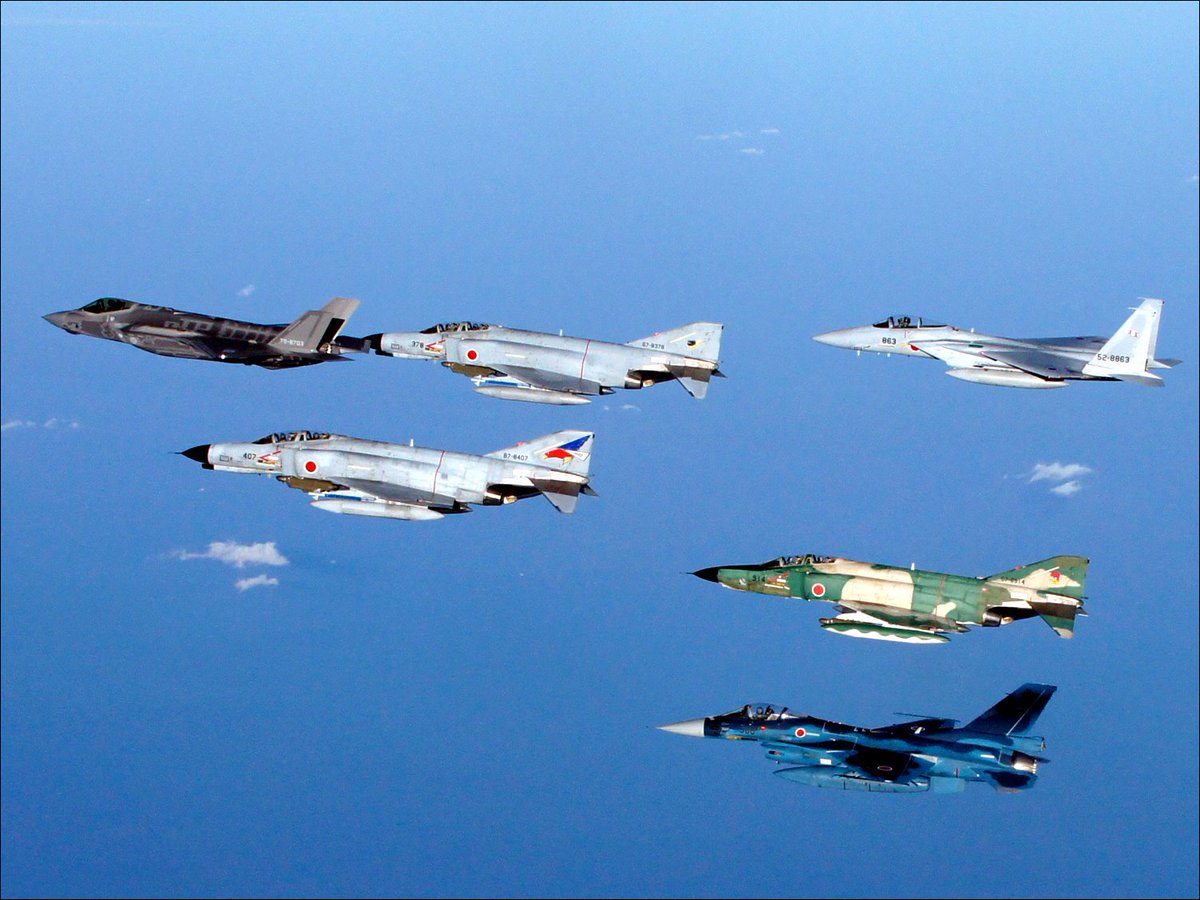Barath wrote:The Navy fought tooth and nail to get their own stealth attack fighter A-12/flying dorito and rejected the naval atf f22-n. And the F18 E/f was the hurried replacement for that disaster.
That's not the point. The Navy had a strike bomber it wanted but that had nothing to do with the N-ATF. The US Navy's interest in the Naval ATF was something that was not US Navy driven but rather congressional and DOD driven. Towards the end of the cold war, the US Navy reluctantly agreed to come on board but the dying days of the cold-war and the state of the threat gave them a fairly easy out. Of course they finally drove the nail in the coffin after promising to upgrade the F-14 through the middle of the current decade which was supposed to be good enough for them because the threat that the CVN faced was projected to considerably reduce with the melting away of the Soviet Union. They never wanted the N-ATF because they have for a long time wanted to divest themselves of any need to support hte joint forces OCA mission, choosing to use its air-power for strike and at most carrier and fleet defense. N-ATF would have been an expensive option for and put OCA demands back on their plate something the Admirals probably feared would eat into their shipbuilding budgets. This mindset is still prevalent in the USN and one of the main reasons most doubt that an F-14 like capability will be fielded by the USN. No CNO was ever measured on the quality or quantity of the Air - Air roles it was willing to share or lead over the USAF. OCA is a very expensive mission which the USN prefers to leave to the USAF. Post cold-war base lining saw these competencies being farmed out. USAF controls Air Dominance (OCA/DCA) while US Navy controls tactical AEA via the VAQ squadrons. This was done to avoid duplicate capabilities which had previously existed with distinction AEA and Air Superiority program offices in both the services.
The F/A-18E/F replaced F-14 squadrons as they retired. Later deliveries replace early F/A-18 squadrons but those were just because the F-35C was 4-5 years late to the game. Though the F/A-18E/F was made a POR after the A-12 was shut down for good its need was rather to replace the F-14 Tomcat squadrons for the most part. The mission profile of those early Rhino's was also quite similar. Essentially the US Navy retired the F-14 and the A-6 without any formal direct capability for capability replacement. The F/A-18 lacked the legs of the A-6 in the strike profile, and lacked the speed, range and firepower of the F-14 in the fleet defense role. Within the sweet spot however it did what it had to do really well. It was a modern platform, carried a whole host of PGM's, had really capable advanced sensors and most importantly low airframe hours and a lower CPFH compared to the Tomcat. It was half a generation ahead of the Hornet and solves one of its most important shortcomings - combat radius. Yet, it still remained a medium ranged strike fighter at best and it won't be till the F-35C that the USN will get a 500-600 nm strike fighter back without resorting to buddy tanking or using USAF's deployed assets.
For the reasons listed above, USN loved it and bought hundreds more than it had originally envisioned..and continues to buy it today with its block III iteration in many ways as modern as any 4.5 gen fighter out there presently. But that aside, the proper way to look at it is that it works for the USN as the missions it has to serve now. It doesn't work if one looks through the lens of using it as a replacement for the F-14, or the A-6 or even the A-12 which was a survivable A-6 replacement about 2 decades ahead of its time. It probably also doesn't work that great for them in the coming decades, something they've realized hence they've initiated their FA-XX program which will likely field a family of long range manned or unmanned capability to start things off.
Aircraft do replace others on flight decks and in hangars, and to varied extent in missions.
Physically they may do but that is most definitely not how fleet recapitalization decisions are made. You don't build a better previous gen. aircraft. You look at future requirements and design and build accordingly. And as I said quite clearly in my previous post, if you measure the Super Hornet through the lens of it being an F-14 Tomcat replacement, then it is subpar at best. That is obviously not the lens the operator looks at it because they need the SH for different roles and missions than what the previous generation of pilots needed the Tomcat for. Even though some squadrons and units may have physically transitioned from the Tomcat to the Rhino. In fact many voices calling for a 800-1000 nm strike figther in the US navy are some of the same voices that wanted the A-12 axed. It would fit into the current USN CVN and post 2030 air wing need perfectly. Of course now they wouldn't really have to make it manned but that is the type of aircraft or combined capability that is likely to replace USN Rhinos and Growlers.
The F14 had a bombcat variation see action
Yes a band aid solution, though one that could have been promising if properly backed with new tails, which in itself was an unsustainable given the limitations of the platform, its reliability and just the expense of operating that fleet. This was no F-15C to F-15E transition which proved out to be a more robust, better performing, more reliable and highly sought after strike fighter in US Air Force inventory and in fact was new built. The Bombcat on the other hand was something patched together because there was a need and there was no replacement. It was most certainly not the only primarily single role figther getting multi-role capability as mid to late 90s saw beefing up of strike capability on a number of platforms around the world. There were other higher end Tomcat based next gen. proposals which were never pursued but for all intents and purposes this was not the role the Rhino filled. As I said, until the arrival of the F-35C the US Navy won't really get a 600 nm combat radius strike figther without an insane number of compromises like EFT's, tanking etc etc.
But back again to the point, the F-18E/F would have made a very lousy F-14 replacement had those missions remained relevant to the US Navy. They went away with the collapse of the SU and other capability enhancement the way some of the others were performed. This allowed the USN to divest its Carrier Air Wing and make it much less diverse. In fact, as of now its all a Hornet/Super Hornet wing which with its short to medium ranged strike capability is a fraction of the capability the USN fielded back in the cold war though it is more than plenty to meet its current obligations especially with support.
The f14 was growing long in the tooth and swing wing was always a maintenance issue. But if the F18 E/f were inadequate, you would have seen new build F14-d and later variants continue.
I think I made it quite clear in my previous post** when I said that the F-18 is completely inadequate as an F-14 tomcat replacement. I mean I don't think that is even up for debate and one will be hard pressed to find someone familiar with both the aircraft that will doubt that. The point that I have been trying to make in my last two posts is that the US Navy divested itself of the missions for which it needed the Tomcat allowing them to replace a long range Air to Air interceptor, and patched up strike aircraft with a medium range fighter with very different flying characteristics and capabilities.
Of course the F-18 E/F is not inadequate for now. There is no significant threat to the CVN from the air that it when combined with the Hornet, E-2D, and EA-18G cannot handle and this will only get better with the arrival of the F-35C and the MQ-25. But that was not the point, the point was that looked at through the lens of the F-14 mission set, the Rhino is a super lousy replacement. But clearly they did not need to look through that lens as the world and requirements had moved on and demanded a different type of aircraft to fill the USN carrier decks.
**The original point was -
Barath wrote:As a newish multi-role it was good enough to replace the F14 of Top Gun fame and a couple of others.
As I said then and again in this post, this is not how the decision to field the Super Hornet was made. It was not evaluated against the F-14. After promising to upgrade the F-14 so that it was viable through 2015ish and using that excuse to get out of the NATF, the US Navy then finally killed the aircraft in the mid 2000s after systematically culling requirements that were farmed out to the F-14 community so that they got to a point where they could get the SH to fit into those squadrons. Same with the A-6. The A-6 to F/A-18E transition was again shedding a fair bit of strike radius. These were conscious decisions to better allign the modern US Navy CAW with the prevalent threat. The Super Hornet is a good medium range multi-role fighter and works for the USN. The block III in particular offers tremendous capability and is going to be very capable (I'll leave the EA-18G out because the platform has literally nothing to do with the capability of that aircraft) in its multi-role mission. But there should be no need to sugar coat and bend facts to somehow compare it to the F-14 because no comparison is possible given such large differences in roles. The fact that many tomcat squadrons transitioned doesn't in any way prove that the USN thinks they were comparable or equal for one to replace the latter. It merely states progression and change of mission type for those units.
Based on what is publicly known, the LREW was a trade/R&D study not a POR. AIM-260 is a POR which was competed and won by Lockheed Martin a couple of years ago. There are literally scores of USAF or USN funded long range weapon programs related S&T and R&D work funded to keep the design teams busy. Not all of it makes into a POR until the right time.
Could the LREW be a distinct POR that they just don't want to talk about. It is possible though quite unlikely because if it were classified then so would have been its trade studies. Between JATM, SACM, MSDM, and ErWN they probably have their plates full.
Barath wrote:The US had also been working for a long time on the shadowy T3 missile testing, whose concept seems to be ramjet to combine aim120D and anti radiation missile.
The US is not still working on the T3. The T3 program has long since concluded after conducting its flight test phase. It was a DARPA run program to demonstrate a common missile for Air to Air, Air to Ground (ARM) and Anti Cruise Missile (CMD) mission. I think those flight tests happened back in 2014 or maybe 2015. Boeing even did a big press PR thing (see below) with their concepts though Raytheon was quiet about theirs though all one needed to go and do was check out Aerojet's website and their annual report to see that their variant with the VFDR flew successfully to support that program. I've provided most of that info here over the years. DARPA's job is to demonstrate tactical capability (T3 came out of their TT Office) that can rapidly transition into operational use but they transition these programs to an appropriate service. Clearly the USAF (ACC is the decision authority on the JATM) felt that they had better proposals then to field the T3 tech. Lockheed has been working on some pretty neat and innovative missile solutions on the ballistic and cruise missile defense role and has been presenting concepts, and even test flying some, that leverage some of the direct work on these programs. It isn't surprising that they managed to best out both Boeing and Raytheon to win this program given that the AIM-260 is unlikely to share the T-3's mission requirement (three targets) instead probably focusing on the technologies and target sets highlighted in the slide posted in my previous post.
Boeing Phantom Works May Unveil New Projects
Davis also disclosed that the Phantoms had conducted four flight tests under the Defense Advanced Research Projects Agency's Triple Target Terminator (T3) program. The test vehicles, about the size of an AIM-120 Advanced Medium Range Air-to-Air Missile, flew "faster and farther" than an Amraam, Davis said, but he did not provide any other details.
Barath wrote: It may have been canceled
T3 was a completely open and transparent program with all of its materials published in DARPA"s official unclassified budgets. The only thing they did not do was release photos of videos which would have generated media buzz had that happened. Yet, as I said companies were free to disclose their participation, the contract awards were all out in the open, and the companies were also allowed to share their successful completion of these milestones. The program concluded with its flight test phase in 2014/15 IIRC, as I said earlier. These are technology related programs that act as a proof of concept and allow a potential service to validate before committing to a POR. In this case, the AIM-260 awards probably logically flow from the T-3 and describes a shift in direction from a more conventional long range multi-role BVRAAM to a hyper-agile, BVRAAM with a different target set..At least that is the currently stated end goal...As I opined earlier in my prior post to Indraanil, it seems the 5th gen operator community seems to have won out..This seems to be a change in direction towards a more optimized missile for 5th and 6th gen fighters assuming it incorporates some of the characteristics of an Air Dominance weapon the USAF has been wanting for nearly half a decade now (which it should given its their next AD weapon). This is logical given the USAF and USN would probably field 1000+ 5th gen aircraft by the time the JATM enters full rate production and it is also quite likely that TD's for the next gen. airframes would also have flown. The T3 in contrast was basically a putting together of all the stuff and capability (longer range, Ramjet propulsion, new seeker) that the missile design teams had been promoting since the 1990s when the USAF began funding demonstrations on ARC's VFDR motors and Raytheon proposing a whole host of missiles for the UK etc.




